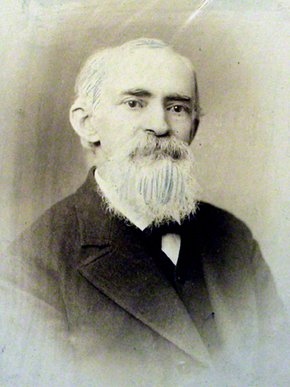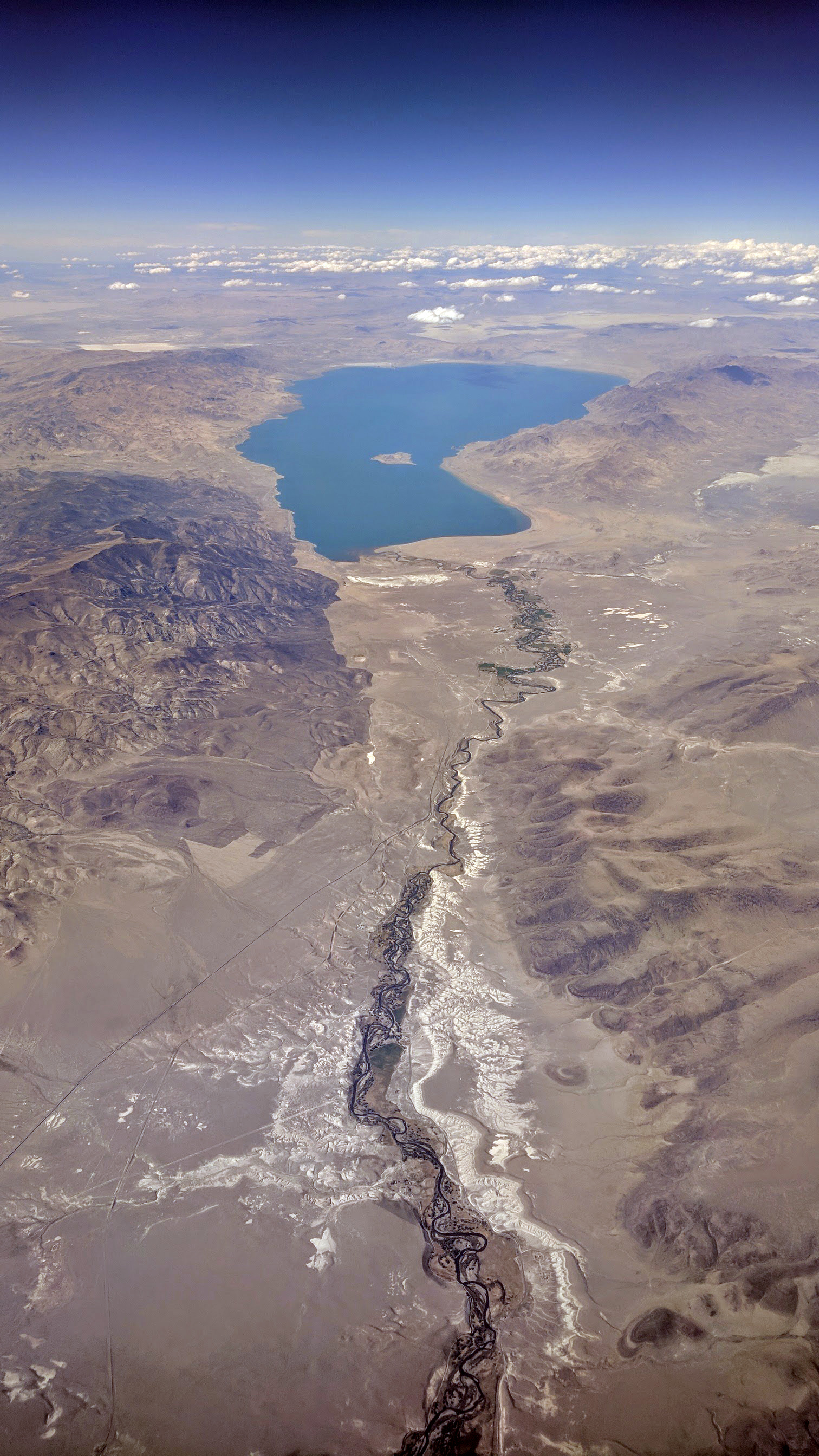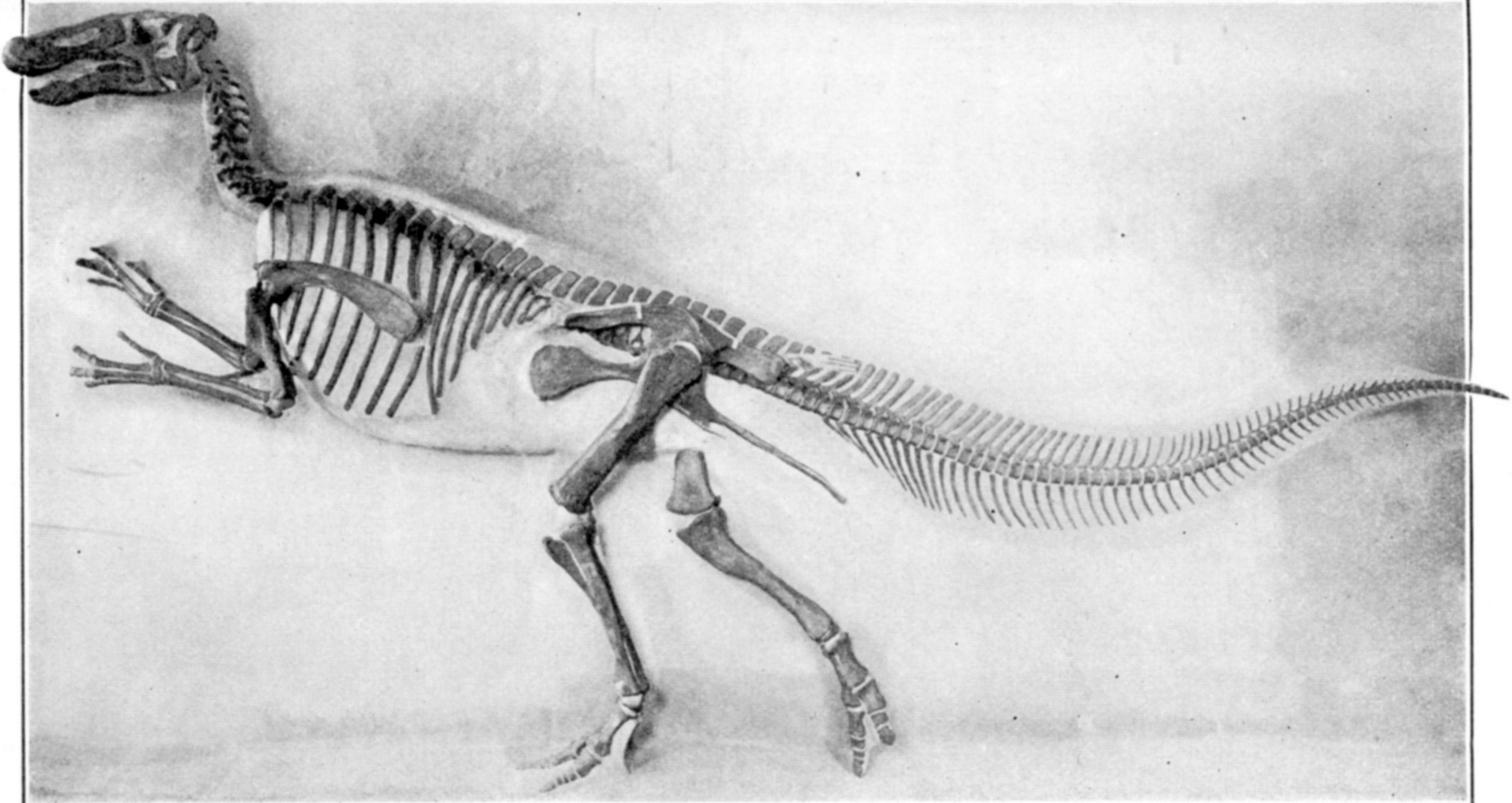|
Pyrgulopsis Nevadensis
The corded purg, scientific name ''Pyrgulopsis nevadensis'', is an extinct species of freshwater snail with a gill and an operculum, an aquatic gastropod mollusk in the family Hydrobiidae. ''Pyrgulopsis nevadensis'' is the type species of the genus '' Pyrgulopsis''. Call R. E. & Pilsbry H. A. 1886. ''On Pyrgulopsis, a new genus of rissoid mollusk, with description of two new forms''Proceeding Davenport Academy of Natural Sciences, volume V. pag914Plate II. figures 1-10. Shell description The shell is small, somewhat elongated, variable, turreted and imperforate. The shell has 4½-5½ whorls, that are strongly unicarinate on periphery, otherwise smooth. The epidermis is shining, light straw in color or whitish. The suture is white. The suture is deeply and regularly impressed, made conspicuous by the approximating carina. There existed also smooth variation.plate II, figure 6-8. The aperture is very oblique, roundly ovate, with an angle on outer edge corresponding to the ... [...More Info...] [...Related Items...] OR: [Wikipedia] [Google] [Baidu] |
Robert Edwards Carter Stearns
Robert Edwards Carter Stearns (1 February 1827, Boston – 27 July 1909, Los Angeles) was an American conchologist. Robert Stearns was passionate about natural history in his youth. Later he specialised in conchology, especially that of the West Coast of the United States. He was a member of the Fisheries Commission (1882–1884) and Secretary of the University of California (Berkeley) (1874–1882). He became Assistant Curator of Molluscs at the National Museum of Natural History The National Museum of Natural History is a natural history museum administered by the Smithsonian Institution, located on the National Mall in Washington, D.C., United States. It has free admission and is open 364 days a year. In 2021, with 7 ... (1885–1892). Stearns married Mary Ann Libby on 28 March 1850. They had one child, a daughter. References *Biography by Gerald J. Rosenzweig in Smithsonian Institution Archives. *Robert Tucker Abbott (1974). ''American Malacologists. A National Regis ... [...More Info...] [...Related Items...] OR: [Wikipedia] [Google] [Baidu] |
Corneous
Corneous is a biological and medical term meaning horny, in other words made out of a substance similar to that of horns and hooves in some mammals. The word is generally used to describe natural or pathological anatomical structures made out of a hard layer of protein. In mammals this protein would usually be keratin. The word corneous is also often used to describe the operculum of a snail, a gastropod mollusc. Not all gastropods have opercula, but in the great majority of those that do have one, the operculum is corneous. (However in several genera within a few families including the marine Naticidae and the terrestrial Pomatiidae, the operculum is primarily calcareous, in other words mostly made of calcium carbonate.) Corneous opercula are made out of the protein conchiolin. References Corneousat dictionary.com Dictionary.com is an online dictionary whose domain was first registered on May 14, 1995. The primary content on Dictionary.com is a proprietary dictionary bas ... [...More Info...] [...Related Items...] OR: [Wikipedia] [Google] [Baidu] |
Extinct Gastropods
Extinction is the termination of a kind of organism or of a group of kinds (taxon), usually a species. The moment of extinction is generally considered to be the death of the last individual of the species, although the capacity to breed and recover may have been lost before this point. Because a species' potential range may be very large, determining this moment is difficult, and is usually done retrospectively. This difficulty leads to phenomena such as Lazarus taxa, where a species presumed extinct abruptly "reappears" (typically in the fossil record) after a period of apparent absence. More than 99% of all species that ever lived on Earth, amounting to over five billion species, are estimated to have died out. It is estimated that there are currently around 8.7 million species of eukaryote globally, and possibly many times more if microorganisms, like bacteria, are included. Notable extinct animal species include non-avian dinosaurs, saber-toothed cats, dodos, mam ... [...More Info...] [...Related Items...] OR: [Wikipedia] [Google] [Baidu] |
Pyramid Lake (Nevada)
Pyramid Lake is the geographic sink of the basin of the Truckee River, northeast of Reno, Nevada, United States. Pyramid Lake is the biggest remnant of ancient Lake Lahontan, the colossal inland sea that once covered most of Nevada. It is approximately 15 miles long and 11 miles wide, covering 112,000 acres entirely enclosed within the Pyramid Lake Paiute Tribe Reservation. Pyramid Lake is fed by the Truckee River, which is mostly the outflow from Lake Tahoe. The Truckee River enters Pyramid Lake at its southern end. Pyramid Lake is an endorheic lake. It has no outlet, with water left only by evaporation, or sub-surface seepage. The lake has about 10% of the area of the Great Salt Lake, but it has about 25% more volume. The salinity is approximately 1/6 that of sea water. Although clear Lake Tahoe forms the headwaters that drain to Pyramid Lake, the Truckee River delivers more turbid waters to Pyramid Lake after traversing the steep Sierra terrain and collecting moderately hi ... [...More Info...] [...Related Items...] OR: [Wikipedia] [Google] [Baidu] |
Walker Lake (Nevada)
Walker Lake is a natural lake in the Great Basin in western Nevada in the United States. It is 11 mi (17 km) long and 5 mi (8 km) wide, in northwestern Mineral County, Nevada, Mineral County along the east side of the Wassuk Range, about 75 mi (120 km) southeast of Reno, Nevada, Reno. The lake is fed from the north by the Walker River and has no natural outlet except absorption and evaporation. The community of Walker Lake, Nevada, Walker Lake is found along the southwest shore. Throughout the 20th century, Walker Lake supported over 50% of the economy of Mineral County through tourism and recreation. From fishing derbies to boat races, water skiing to an annual Loon Festival, the lake was a key part of Mineral County and Walker River Paiute communities. The area around the lake has long been inhabited by the Northern Paiute, Paiute who depended on the lake's fish and bird populations for food. More than a century of upstream irrigation diversions ... [...More Info...] [...Related Items...] OR: [Wikipedia] [Google] [Baidu] |
Nevada
Nevada ( ; ) is a U.S. state, state in the Western United States, Western region of the United States. It is bordered by Oregon to the northwest, Idaho to the northeast, California to the west, Arizona to the southeast, and Utah to the east. Nevada is the List of U.S. states and territories by area, 7th-most extensive, the List of U.S. states and territories by population, 32nd-most populous, and the List of U.S. states and territories by population density, 9th-least densely populated of the U.S. states. Nearly three-quarters of Nevada's people live in Clark County, Nevada, Clark County, which contains the Las Vegas–Paradise, NV MSA, Las Vegas–Paradise metropolitan area, including three of the state's four largest incorporated cities. Nevada's capital is Carson City, Nevada, Carson City. Las Vegas is the largest city in the state. Nevada is officially known as the "Silver State" because of the importance of silver to its history and economy. It is also known as the "Battle ... [...More Info...] [...Related Items...] OR: [Wikipedia] [Google] [Baidu] |
United States
The United States of America (U.S.A. or USA), commonly known as the United States (U.S. or US) or America, is a country primarily located in North America. It consists of 50 states, a federal district, five major unincorporated territories, nine Minor Outlying Islands, and 326 Indian reservations. The United States is also in free association with three Pacific Island sovereign states: the Federated States of Micronesia, the Marshall Islands, and the Republic of Palau. It is the world's third-largest country by both land and total area. It shares land borders with Canada to its north and with Mexico to its south and has maritime borders with the Bahamas, Cuba, Russia, and other nations. With a population of over 333 million, it is the most populous country in the Americas and the third most populous in the world. The national capital of the United States is Washington, D.C. and its most populous city and principal financial center is New York City. Paleo-Americ ... [...More Info...] [...Related Items...] OR: [Wikipedia] [Google] [Baidu] |
Endemism
Endemism is the state of a species being found in a single defined geographic location, such as an island, state, nation, country or other defined zone; organisms that are indigenous to a place are not endemic to it if they are also found elsewhere. For example, the Cape sugarbird is found exclusively in southwestern South Africa and is therefore said to be ''endemic'' to that particular part of the world. An endemic species can be also be referred to as an ''endemism'' or in scientific literature as an ''endemite''. For example '' Cytisus aeolicus'' is an endemite of the Italian flora. '' Adzharia renschi'' was once believed to be an endemite of the Caucasus, but it was later discovered to be a non-indigenous species from South America belonging to a different genus. The extreme opposite of an endemic species is one with a cosmopolitan distribution, having a global or widespread range. A rare alternative term for a species that is endemic is "precinctive", which applies to ... [...More Info...] [...Related Items...] OR: [Wikipedia] [Google] [Baidu] |
Pyrgulopsis Nevadensis Radula
''Pyrgulopsis'' is a genus of freshwater snails with a gill and an operculum, aquatic gastropod mollusks in the family Hydrobiidae. Etymology The name ''Pyrgulopsis'' is composed from ''Pyrgula'', another genus of snail, and ''opsis'' = aspect of. Description Generic characters of the genus ''Pyrgulopsis'' are: the shell is minute, conically turreted, somewhat elongated, imperforate and unicarinate. The apex is acute. The aperture is ovate. The edge of the aperture, called the peritreme, is continuous. The operculum is ovate, thin, corneous and spiral, with polar point well forward and approximating the columella. The jaw is thin and membranaceous. The radula is odontophore, with teeth are arranged in transverse rows, according to the formula 3 + 1 + 3. Formula for denticles of rhachidian: . Distribution The distribution of the genus ''Pyrgulopsis'' includes Western and South-western United States. Snails of species in the genus ''Pyrgulopsis'' occur in fresh water ... [...More Info...] [...Related Items...] OR: [Wikipedia] [Google] [Baidu] |
Charles Emerson Beecher
Charles Emerson Beecher (October 9, 1856 – February 14, 1904) was an American paleontologist most famous for the thorough excavation, preparation and study of trilobite ventral anatomy from specimens collected at Beecher's Trilobite Bed. Beecher was rapidly promoted at Yale Peabody Museum, eventually rising to head that institution. Early life Charles Emerson Beecher, the son of Moses and Emily Emerson Beecher, was born in Dunkirk, New York, October 9, 1856. In early childhood Beecher's family moved to Warren, Pennsylvania, where he attended private and high schools. A born naturalist and collector, Beecher began collecting fossils from the Chemung and Waverly Formations about Warren, resulting in an extensive collection of fossil Phyllocarids and freshwater Unionids presented to the New York State Museum in Albany in 1886 and 1887. 20,000 specimens (40,000 if duplicates are included), largely collected by Beecher himself, were present, including at least 121 species ... [...More Info...] [...Related Items...] OR: [Wikipedia] [Google] [Baidu] |
Radula
The radula (, ; plural radulae or radulas) is an anatomical structure used by molluscs for feeding, sometimes compared to a tongue. It is a minutely toothed, chitinous ribbon, which is typically used for scraping or cutting food before the food enters the esophagus. The radula is unique to the molluscs, and is found in every class of mollusc except the bivalves, which instead use cilia, waving filaments that bring minute organisms to the mouth. Within the gastropods, the radula is used in feeding by both herbivorous and carnivorous snails and slugs. The arrangement of teeth ( denticles) on the radular ribbon varies considerably from one group to another. In most of the more ancient lineages of gastropods, the radula is used to graze, by scraping diatoms and other microscopic algae off rock surfaces and other substrates. Predatory marine snails such as the Naticidae use the radula plus an acidic secretion to bore through the shell of other molluscs. Other predatory marine snails ... [...More Info...] [...Related Items...] OR: [Wikipedia] [Google] [Baidu] |
Pyrgulopsis Nevadensis Shell 3
''Pyrgulopsis'' is a genus of freshwater snails with a gill and an operculum, aquatic gastropod mollusks in the family Hydrobiidae. Etymology The name ''Pyrgulopsis'' is composed from '' Pyrgula'', another genus of snail, and ''opsis'' = aspect of. Description Generic characters of the genus ''Pyrgulopsis'' are: the shell is minute, conically turreted, somewhat elongated, imperforate and unicarinate. The apex is acute. The aperture is ovate. The edge of the aperture, called the peritreme, is continuous. The operculum is ovate, thin, corneous and spiral, with polar point well forward and approximating the columella. The jaw is thin and membranaceous. The radula is odontophore, with teeth are arranged in transverse rows, according to the formula 3 + 1 + 3. Formula for denticles of rhachidian: . Distribution The distribution of the genus ''Pyrgulopsis'' includes Western and South-western United States. Snails of species in the genus ''Pyrgulopsis'' occur in fresh ... [...More Info...] [...Related Items...] OR: [Wikipedia] [Google] [Baidu] |


.jpg)

.png)
.jpg)



